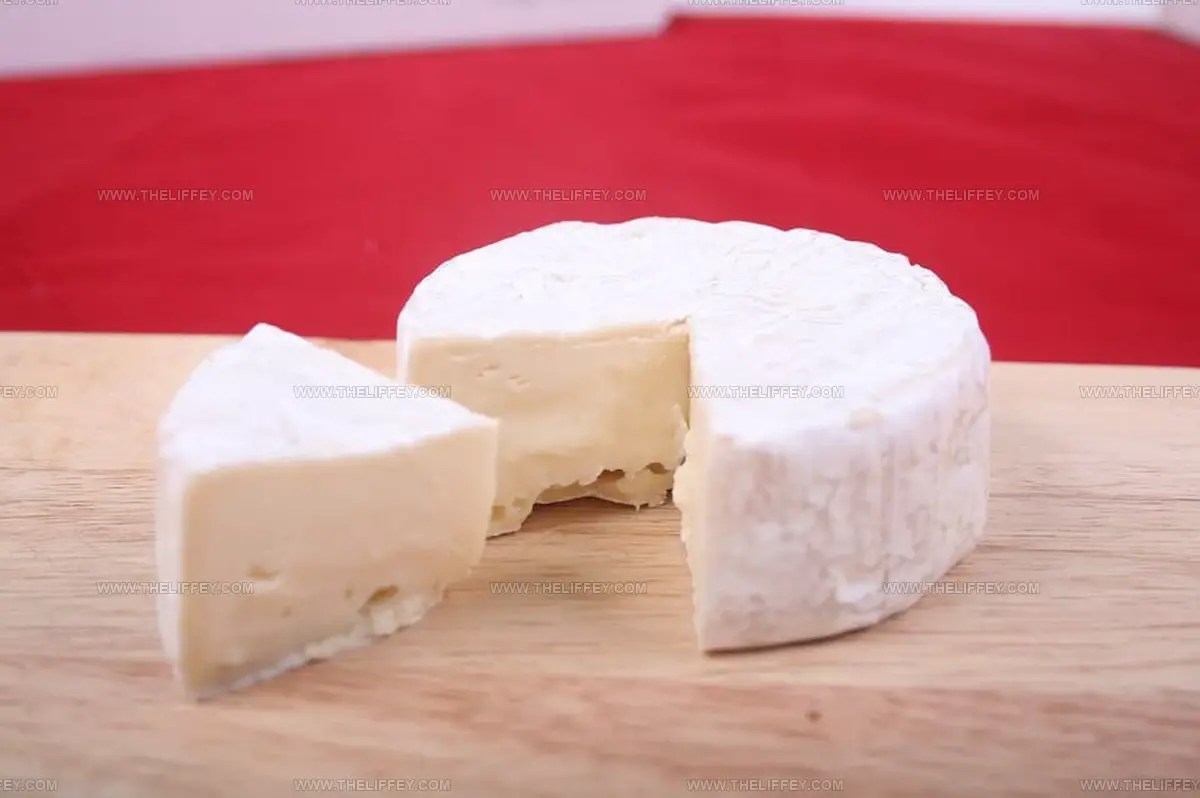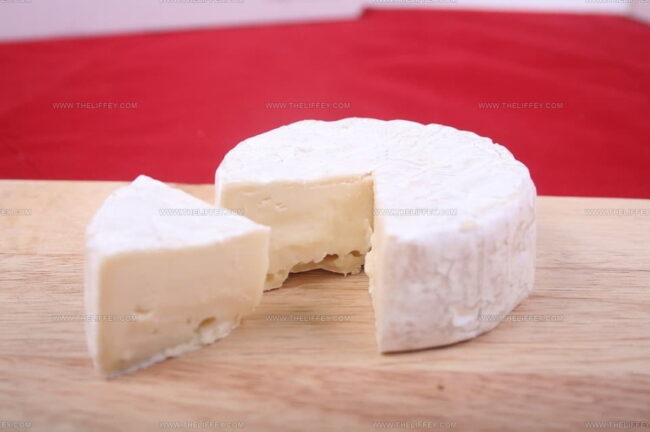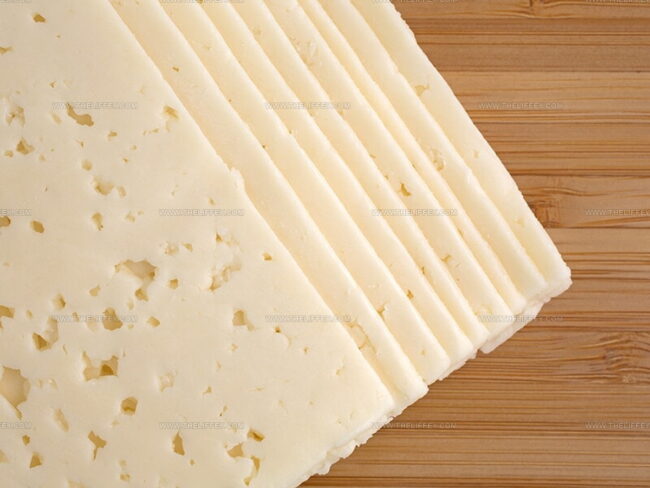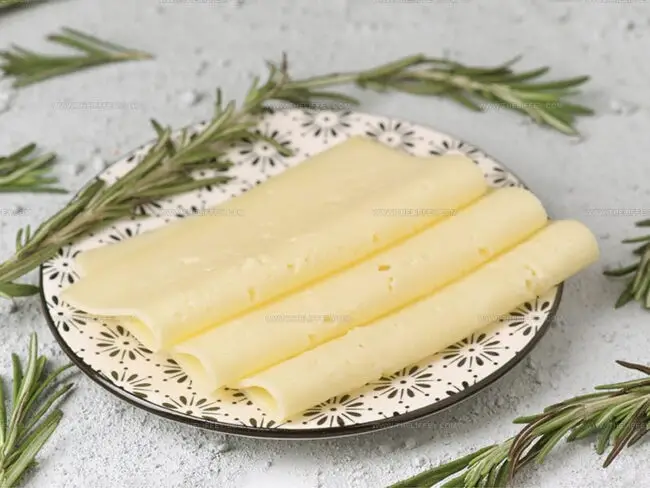What Does Havarti Cheese Taste Like? The Buttery Gold Truth
Havarti cheese, a creamy Danish delight, offers a tantalizing culinary experience that goes beyond ordinary dairy products.
Cheese enthusiasts often wonder about its unique characteristics and flavor profile.
This mild yet distinctive cheese has captured the hearts of food lovers worldwide with its smooth texture and subtle nuances.
Originating from Denmark, Havarti brings a rich history and cultural significance to the table.
Sophisticated palates and casual snackers alike find themselves intrigued by its versatile nature.
Unraveling the mystery of this delectable cheese promises an exciting gastronomic journey that will transform your understanding of dairy delicacies.
Get ready to dive deep into the world of Havarti and unlock its delicious secrets.
Havarti Cheese: What Is It?
Havarti cheese comes from Denmark, first made on an experimental farm during the mid-nineteenth century.
Cheesemakers create this dairy product using traditional methods where rennet helps milk separate into curds.
Workers squeeze these curds into special molds, drain them, and allow the cheese to mature.
Havarti belongs to the washed curd cheese category, which gives it a delicate taste.
Smooth surfaces define this cheese, with a color ranging from cream to yellow.
Small, uneven holes dot its interior, creating an interesting texture.
Cheesemakers do not add a rind to this particular cheese variety.
Mild butter notes emerge when you smell Havarti, similar to Swiss cheese but with subtle variations.
Sweet and slightly tangy flavors characterize its taste profile.
Younger versions offer gentler notes, while aged versions develop more complex saltiness and hint at hazelnut undertones.
Typical maturation takes around three months, though longer aging changes its character significantly.
The Taste of Havarti Cheese
Smooth cheese with no hard outer layer and random holes marks Havarti's unique look.
Some kinds taste sharper and carry more nutty notes.
Cheese brings a buttery flavor with a hint of sour tang.
Sitting between Muenster and Monterey Jack, this cheese offers interesting taste profiles.
Herb and spice blends or caraway seeds often enhance its basic character.
Danish roots define this semi-soft cheese with rich, mild, and nutty qualities.
Cooks use it as a stand-in for many other cheeses, working best in sauces and pickle dishes.
Trying small bits helps understand its complex flavor.
Careful testing prevents overwhelming strong tastes in larger recipes.
Havarti brings a slightly sour, buttery, and sweet taste experience.
Stronger versions deliver more intense nutty and sharp sensations.
Cheese flavor shifts depending on its age.
Some versions mix in horseradish or pepper elements, creating exciting taste combinations.
Similar to Mozzarella in basic texture, nuttier types pack more punch with deeper, sharper notes.
How Aging Affects Havarti Flavor and Texture
Aging changes Havarti cheese in ways you can taste and feel.
As Havarti gets older, its flavor grows stronger and richer.
The texture also changes, from soft and creamy when it’s young to a bit firmer and crumbly as it ages.
An aged Havarti will taste more nutty, buttery, and sometimes even slightly sharp, while a younger Havarti stays mild and smooth.
If you want a gentle flavor, go for young Havarti.
If you want something with more kick and a drier bite, choose an aged one.
How Havarti Cheese Is Made
Havarti stands out from other cheeses with its unique flavor and feel.
Wisconsin milk gets mixed with rennet, a special enzyme group, to start breaking down and forming curds.
Cheesemakers separate curds from liquid whey, then press those curds into special molds.
Aging happens slowly over months or even years.
Longer aging creates deeper, more complex cheese flavors!
Small holes dot the Havarti surface, similar to swiss cheese.
These little openings come from helpful microbes working during cheesemaking.
Havarti vs. Swiss Cheese Differences
Havarti and swiss cheese both have holes, but their flavors and textures are quite different.
Swiss cheese stands out with its firmer feel and nutty taste, which comes from longer aging and large holes.
Havarti offers a softer experience with a buttery, creamy profile.
Swiss cheese holes look bigger, while Havarti's holes are smaller and more evenly spread.
Havarti brings a mild and buttery flavor that feels rich and smooth.
Fresh Havarti tastes delightfully creamy and soft.
Cheese lovers can easily find this variety across US markets, especially in Wisconsin.
Cheese makers produce several types of Havarti.
Made from cow's milk, this semi-soft cheese ages slightly, giving it a gentle and pleasant taste.
Its texture shifts from soft to semi-soft when fresh, with a mellow flavor that makes it simple to enjoy.
What to Serve With Havarti Cheese
Havarti pairs wonderfully with sweet fruits such as pears, figs, or Honeycrisp apples.
Mix Havarti with a dollop of raspberry jam or drizzle of honey.
Cheese lovers know the secret to a perfect snack includes some extra crunch:
Why Havarti Cheese Has Holes
Cheesemakers add helpful bacteria during cheese production.
These bacteria grow inside the cheese and release carbon dioxide.
Gas bubbles get trapped in the cheese, creating small holes or eyes.
Makers start by mixing bacteria into milk at the beginning of cheesemaking.
Propionibacter Sherman bacteria eat lactic acid in the mixture and create carbon dioxide gas bubbles.
Classic cheeses like Havarti, Tilsit, and Esrom show many small gas-filled holes.
Some cheeses such as Colby also have tiny jagged spaces in their bodies.
How Old Is Havarti Cheese?
Havarti's maturation period depends on cheesemakers and their desired flavor goals.
Typical aging spans around three months.
This process helps maintain the cheese's signature creamy and mild taste.
Some varieties might age for an entire year or longer.
Selecting a cheese with excellent melting qualities matters.
Aged Havarti works beautifully when combined with garlic and herb-seasoned oven-crisped croutons and crisp seasonal apples.
Such pairings create a more complex texture with a slightly saltier profile and distinct nutty notes reminiscent of hazelnuts.
Searching for Havarti alternatives?
Saint Paulin cheese offers a similar experience.
This French cheese ages moderately and shares Havarti's mild buttery flavor.
Saint Paulin complements many ingredients like dill, horseradish, and fruit.
Sandwich and pasta lovers appreciate its versatility for everyday cooking.
Cheese selection requires considering melting characteristics and overall texture.
Mild preferences can always be adjusted with additional ingredients.
Why Havarti Cheese Tastes So Good
Beyond its mild and buttery qualities, Havarti delivers significant amounts of vitamin A and vitamin D - two essential nutrients critical for overall wellness.





John Conley
Founder & Culinary Storyteller
Expertise
Recipe Development, Culinary Writing, Home Cooking Techniques, Seasonal Ingredient Utilization
Education
Lane Community College, Eugene, OR
Certificate in Culinary Arts
Focused on foundational cooking techniques, kitchen safety, and menu planning.
Gotham Writers Workshop, New York, NY
Course in Food Writing
Explored the art of crafting engaging culinary narratives and recipe development.
John grew up where food meant connection: big bowls, warm kitchens, and meals that told a story. After earning his Certificate in Culinary Arts from Lane Community College and diving deep into food writing at Gotham Writers Workshop, he found his calling: turning everyday recipes into something worth savoring.
At The Liffey, John’s focus is all about crafting dishes that feel easy, honest, and full of heart.